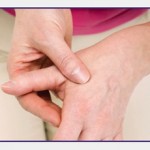Level 3 Established Patient E&M Visit
A 43-year-old patient is seen in the office for a follow-up visit of her RF-positive rheumatoid arthritis and primary osteoarthritis of the left knee. The patient is on sulindac, methotrexate and folic acid. At her last visit, the patient’s methotrexate dose was increased, which has greatly reduced her pain. Her pain is at Level 2 for her knees, and her wrists are at Level 1. The osteoarthritis is stable. The patient denies any chest pain; her dyspnea and all other systems are negative. She does not smoke, and her family has no history of any rheumatic diseases.
On examination, the patient is alert and oriented. Her weight is 155 lbs., height 5 feet and 6 inches with a temperature of 98ºF. There is no lymphadenopathy. Her lungs are clear. She has a regular heart rate and rhythm with no murmurs or friction rubs. Her skin shows no lesions or rashes, and her abdomen is soft with no masses or HSM.
Musculoskeletal exam: Bony proliferation and slight ulnar deviation in the bilateral wrists, bony proliferation and slightly decreased flexion in the bilateral second and fifth PIP joints, and bony proliferation of the bilateral knees. All other joints are unremarkable with FROM.
Diagnoses:
- Rheumatoid arthritis with rheumatoid factor;
- Osteoarthritis of the left knee;
- Long-term nonsteroidal anti-inflammatory drug (NSAID); and
- Long-term disease-modifying anti-rheumatic drug (DMARD).
Plan: Complete blood count and liver function tests are ordered to monitor drug toxicity. The patient is to continue on her current medication regimen. The patient is told to schedule a follow-up visit in two months.


